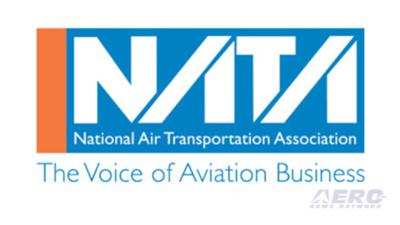Calls Effort 'Particularly Disappointing'
The National Air Transportation Association (NATA) released a report provided to the FAA in response to charges levied by the Aircraft Owners and Pilots Association (AOPA) that FBOs and airports are maximizing their revenue streams in a manner that is unfair to pilots. Earlier this year, NATA became aware of AOPA’s eleven-month campaign to regulate airports and on-field businesses, obtained the relevant documentation from the FAA and shared it with other impacted parties in the general aviation community. Recently, AOPA announced it is requesting either the FAA require FBOs to provide unfettered access to ramps and facilities or airports to provide pilots with free public ramp space.

“The AOPA effort is particularly disappointing as it continues a pattern of contradictory assertions designed to alleviate industry concerns while it pursues an economic regulatory agenda,” stated NATA President Martin Hiller. “While AOPA claims to support FBOs and the free market, there is no recognition of the fact that some locations require different pricing models. Incredibly, AOPA chose to attack the FAA for asking stakeholders to comment on its call for economic regulation of FBOs and even criticized NATA for bringing their covert, eleven-month campaign to others attention,” Hiller continued.
“AOPA’s documents speak for themselves,” said Hiller. “Their presentation to the FAA likens FBOs to public utilities and requests the agency examine oversight mechanisms in other industries as possible models. That is a pure and straightforward move toward economic regulation, borne out by last week’s announcement.”
In response to AOPA’s initial allegations, NATA presented a report on the state of the aviation business sector to Winsome Lenfert, FAA’s Deputy Associate Administrator for Airports. The summary, developed with the assistance of FBO and air charter members, discusses the costs of operating airport businesses and the many variables that go into determining its pricing structure, including capital invested, lease duration, fuel volume, personnel expenses, hours of operation, and traffic types.
“NATA was gratified by the FAA’s outreach to us and their response to our report,” stated Hiller. “In addition, I also met with Mark Baker, the President of AOPA. While I do not believe it is appropriate to share confidential conversations or comments of others publicly, I will say that we have significantly different positions. Among other things, the AOPA proposal requires FBOs to assume the security and safety liabilities associated with their presence – without compensation. The decision to assess a facility charge, particularly when there are no purchases of fuel or services, should be yours and not imposed by law or regulation.”
“There are existing FAA mechanisms to address situations where an FBO or airport is violating grant assurance requirements to furnish services on a 'reasonable, and not unjustly discriminatory, basis to all users thereof,'” Hiller continued. “Neither NATA nor its members support those violating that important assurance, which would also represent a breach of faith with their customers.”
“NATA looks forward to our continuing work with the FAA and other aviation stakeholders on this important issue and will continue to meet rhetoric with facts in support of free enterprise,” Hiller concluded.
(Source: NATA news release)
 Unfortunate... ANN/SportPlane Resource Guide Adds To Cautionary Advisories
Unfortunate... ANN/SportPlane Resource Guide Adds To Cautionary Advisories ANN FAQ: Turn On Post Notifications
ANN FAQ: Turn On Post Notifications ANN's Daily Aero-Term (04.29.24): Visual Approach Slope Indicator (VASI)
ANN's Daily Aero-Term (04.29.24): Visual Approach Slope Indicator (VASI) ANN's Daily Aero-Term (04.28.24): Airport Marking Aids
ANN's Daily Aero-Term (04.28.24): Airport Marking Aids ANN's Daily Aero-Linx (04.28.24)
ANN's Daily Aero-Linx (04.28.24)



